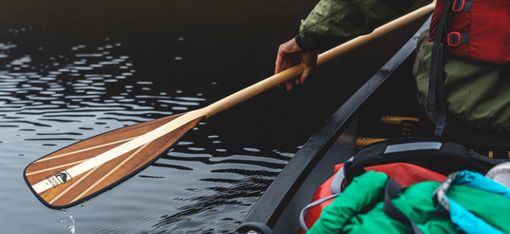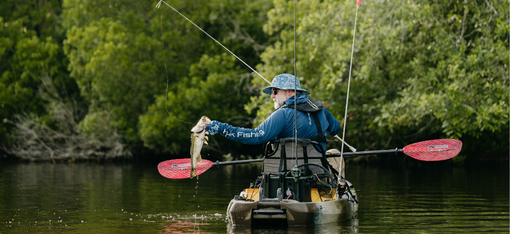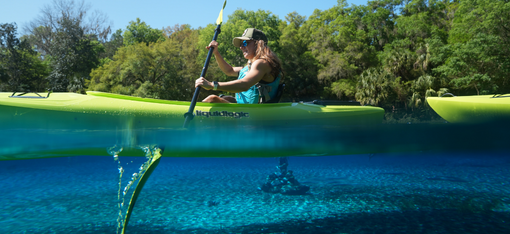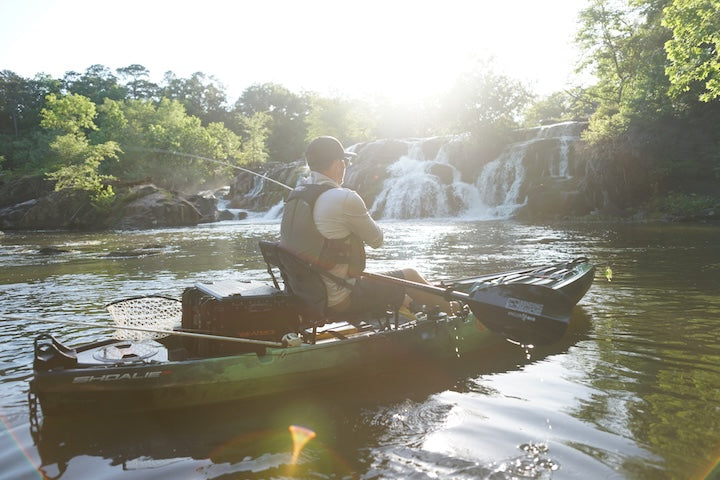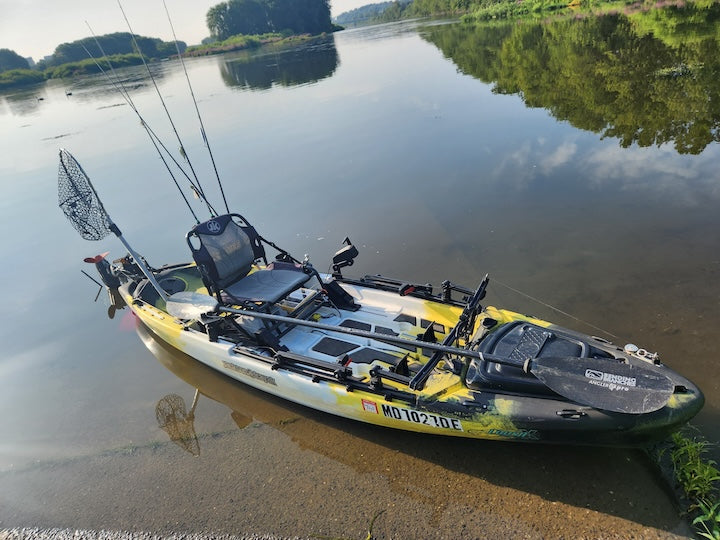When to Use an All-Carbon Canoe Paddle (and when not to)
3-minute read
An all-carbon canoe paddle is your best option for many canoeing environments. But it’s not your top choice for others.

How do you know if you should add an all-carbon paddle to your collection? That’s what we’ll explore here:
Top Benefits of an All-Carbon Canoe Paddle
Hands down, the top benefit of a 100% carbon paddle is its feather-light weight. There isn’t another material on the market currently that provides the same strength-to-weight ratio.
This gives canoeists a couple key advantages:
- You can use a carbon paddle all day long with less fatigue than a heavier paddle will cause.
- This ultra-low weight may mean the difference between canoeing or not canoeing for paddlers with shoulder issues.
A second key benefit of carbon is it has more flex than aluminum, wood and fiberglass. That extra flex—especially in the shaft—is another way a carbon paddle helps ease the strain over many hours of canoeing.
When it’s used in the environments it’s made for, an all-carbon canoe paddle is extremely durable and will last for decades.
Best Environments for an All-Carbon Paddle
An all-carbon paddle is your best choice for multi-day or multi-week canoe trips on flatwater (lakes). If you’re a tripper, you know what it’s like to ache after 6-10 hours of paddling for days on end. The lighter your paddle, the less fatigue and soreness you’ll experience.
This is especially true if you opt for a bent shaft all-carbon paddle. That’s efficiency and lightness at its best.
A carbon paddle is a great choice for slow-moving rivers, too.

Don’t Use an All-Carbon Paddle When…
If most of your canoeing is on whitewater or shallow, rocky rivers with regular impact on the blade, an all-carbon paddle isn’t your best choice.
That same flex that makes it best for long days of paddling is a disadvantage when you need short bursts of energy and power—like in whitewater environments.
Instead, you’ll want to sacrifice some weight for extra durability in the blade and more stiffness in the shaft. Our Expedition Plus wood canoe paddle is a great option.
The Expedition Plus is still very light at 24 ounces. This super-tough wood paddle uses close-grained and durable hardwoods in its 18-laminate shaft. Its blade is completely edged with our proprietary Rockgard® protection, then wrapped with 4 ounces of fiberglass.
Another option is a carbon/nylon blend like Aqua Bound’s Edge whitewater canoe paddle. It’s still relatively light, but with increased stiffness and blade strength.
Many canoeists who paddle a combination of flatwater and swift-moving rivers bring two paddles: an all-carbon paddle for the flatwater sections and a stiffer, heavier-duty paddle for the rocky river sections.

Bending Branches’ All-Carbon Black Pearl Canoe Paddles
We first introduced our all-carbon Black Pearl canoe paddle as a bent shaft model several years ago. We added its straight shaft counterpart in 2022. It’s been a favorite of elite and recreational canoeists alike ever since.
Just 16 ounces, you’ll hardly know it’s in your hands as you paddle (or portage). Both models feature our Contoured Palm Grip for all-day comfort and control. And they both include our nylon-weave Edgegard® tip protection that seals the carbon and prolongs the life of your paddle.
Check them out: Black Pearl 11 (bent shaft) and Black Pearl ST (straight shaft)
(All photos courtesy of Paul Villecourt)
Do you have paddle questions our friendly Customer Service Team can help you with today? Contact them: 715-755-3405 • [email protected]
More for you...




